The Century-Long Scientific Journey of the Affordable Grocery Store Orchid
Orchids were once considered the world’s most difficult and exotic flowers. So why can you buy one for $12.99 at Trader Joe’s?
Wholesale orders go out today at Waldor Orchids, and the front room is filled with daubs of pink, purple, and orange, sweeps of peach, yellow splotches splattered with blood-red droplets, palettes of lavender fading into white. “This order here is a real basic order,” says Dave Off, picking a scrawled slip off the wall. Here in the greenhouses his grandfather built by the bay in Linwood, New Jersey, there are plants that have been alive for more than 100 years and plants that were born 18 months before in test tubes in Florida. That “basic order” means two large pots, with four phalaenopsis orchid plants apiece, two facing forward and two doubles—each with a pair of flower-bearing, stem-like spikes—turned towards the side.
When they’re in bloom, phalaenopsis spikes (or inflorescences, as they’re also known) curve gently under the weight of an elegant row of flowers. If plants were puppies, phalaenopsis orchids would be labrador retrievers—easy-going, pretty enough, and immensely popular. Off sells more white phals than he does any other flower. They’re so easy to reproduce, with each almost an exact copy of the next, that customers buy them online as if they are toothbrushes or T-shirts or any other factory-made item, and expect them to show up looking exactly like the picture.
For many years, orchids were considered a luxury—the exclusive domain of obsessed collectors who could coddle them in expensive hothouses. But today anyone can walk into Trader Joe’s or Home Depot and buy one for $12.99 or less. Orchids now populate the counters of cheap nail salons, the tables of tasteful living rooms, and tony hotel lobbies around the world. They might make a classy-ish and inexpensive housewarming present or hostess gift. All the way back in 1850, an orchid columnist for a gardening magazine imagined that one day the price of the flowers would be “within the reach of all.” That promise came true. It just took a little longer than the orchid lovers of the 19th century expected.
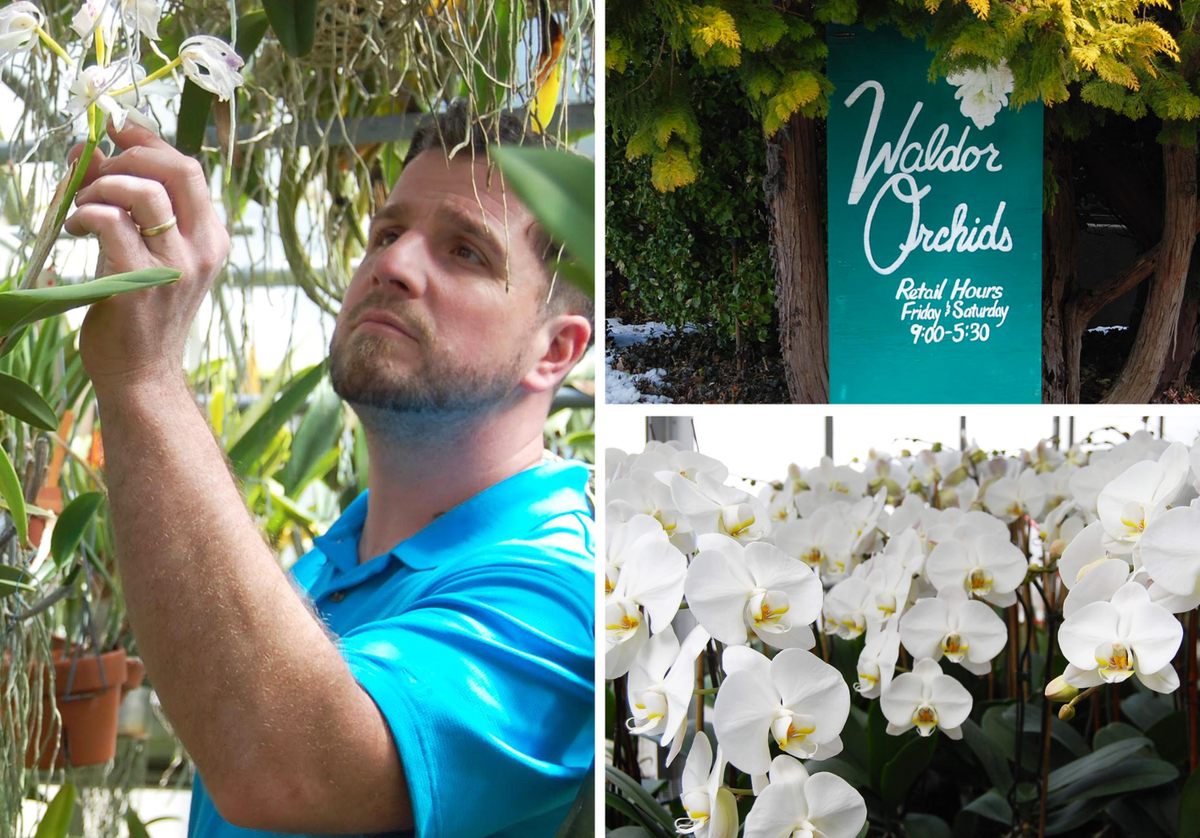
Humans have become adept at shaping plants and animals to our needs and desires, but orchids have been more resistant to our interventions than most of the wild things we covet. Collectors and gardeners devoted their whole lives to cultivating orchids, and still struggled to get seedlings to emerge, to make the plants comfortable in our homes, and to encourage them to reproduce. Corralling orchids—coaxing out the secrets that let us germinate, replicate, and commodify them—took a century of dedicated floriculture. Now there is a multinational apparatus of orchid science, sales, and shipping. An orchid might travel across the globe, from Taiwan to California to New Jersey, before it lands in a bathroom in Brooklyn.
Because of the innovations and efforts of plant scientists, orchids are now a commercial force. Over the past decade they pushed out poinsettias to become the most valuable potted plants in the United States, with sales worth $288 million in 2015, the last year for which U.S. Department of Agriculture data are available. But that success is limited to only a few types of orchids, out of tens of thousands of species, which make up one of the two largest families of plants on the planet. From roots to flowers, there are orchids smaller than an inch. The largest can weigh a ton. Vanilla is an orchid, the only one used in industrial food production. Some orchids grow on trees, others in bogs. Some have petals fringed like a leaf of frisée. Some have petals that look like the face of a monkey. But the ones we see available everywhere are all the same, derived from one tiny branch of the orchid family—phalaenopsis.
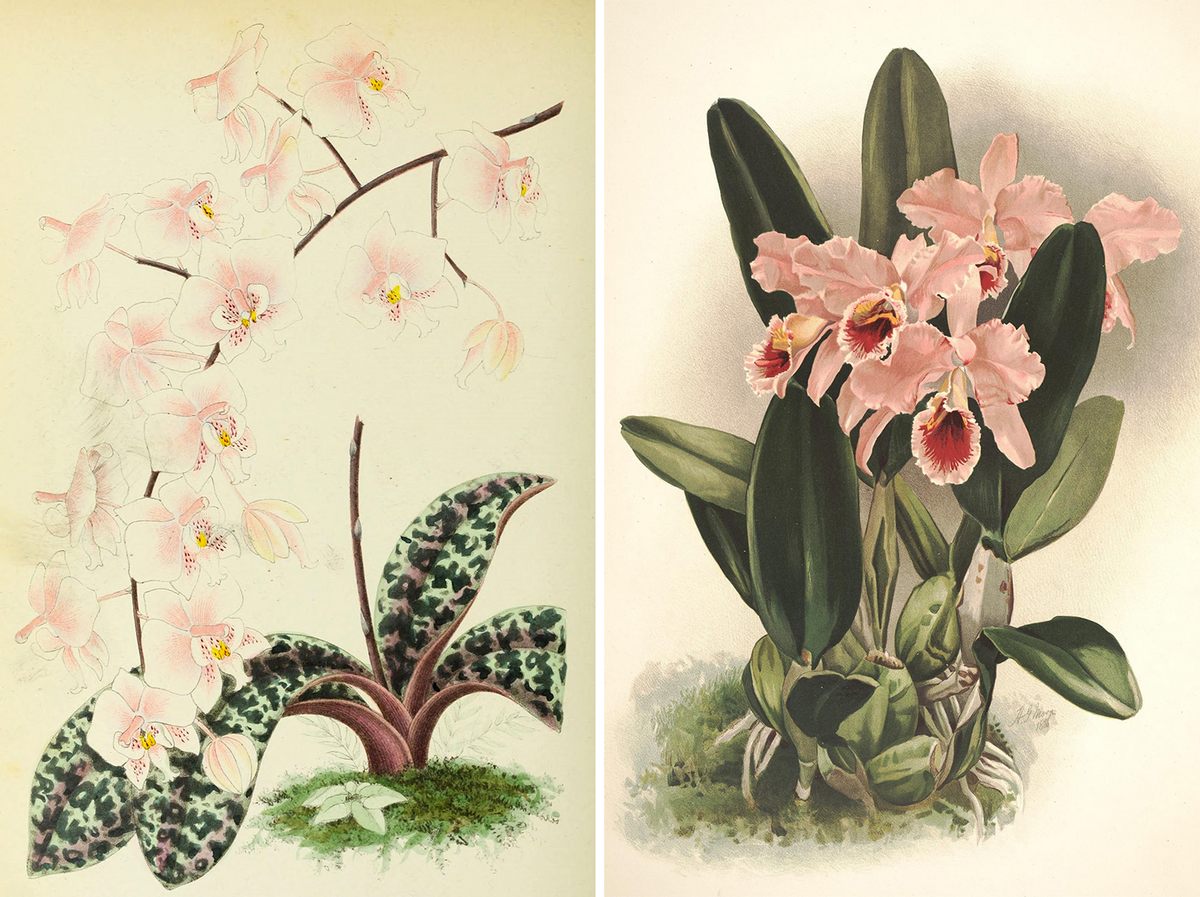
It took around 400 years of trying for anyone to understand what makes an orchid seed grow into a plant. The smallest orchid seeds weigh less than a microgram and are as tiny as a human sperm, and for many years scholars in Europe believed that orchid flowers grew from fermenting semen left behind in fields and forests by goats or birds. Only in the 16th century did a scientist first identify and describe their seeds.
Europe has hundreds of orchid species of its own, but the orchids that drove plant people to madness and obsession came from across the ocean. In the early 1800s, naturalists started shipping flouncy, bright cattleya orchids from tropical Brazil back to England. These flowers grow larger than a person’s palm, and they drip with color and ripple along their petal edges. But no one could figure out how to create more of them. A single pod can contain millions of seeds, and all of them might fail to grow, whether they’re sown on pieces of fern, strips of cork, patches of moss—at one time growers tried anything that seemed like it might work. Demand for these tropical orchids kept rising, but no one in Europe could reliably produce them. Orchid fever ran so hot that the wealthiest orchid lovers hired professional collectors to travel to faraway jungles and send plants back home.
Phalaenopsis, a genus of orchids now comprised of around 60 species and seemingly countless hybrids, were rare in Europe then. They often dried up and died on the journey from their natural range, which extended from southern Asia to northern Australia. Cattleyas, on the other hand, need a period of dormancy where they can go without water. They also have what are called pseudobulbs—turgid stores of water and nutrients that kept some of the plants alive long enough to eventually fetch high prices in Europe. Owning orchids meant being able to afford a plant that a man might have risked his life to collect, that might die at any time, and that couldn’t be made to reproduce.
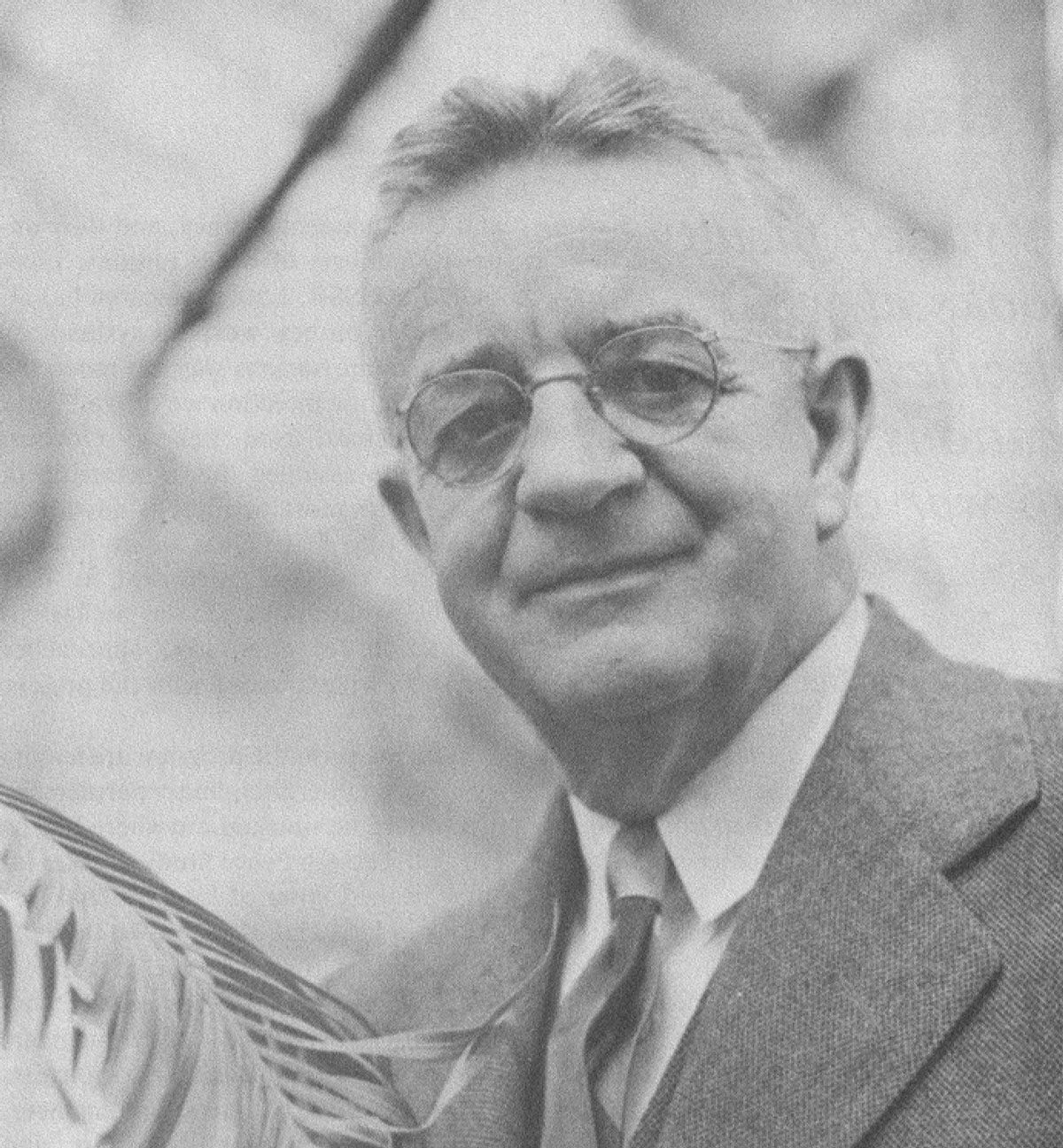
Lewis Knudson wasn’t particularly taken by orchids, originally. He went to Cornell University in 1908 as a plant physiologist interested in how plants metabolize of sugar. According to Joseph Arditti, a biologist and historian at the University of California, Irvine, who has documented, in detail, the story of orchid cultivation, Knudson was a man of determined preferences. He favored dapper blue suits and clicking heels. He began every evening with a drink (scotch and soda, though during Prohibition, he and a neighbor made their own wine).
By the time orchids caught Knudson’s attention, botanists had discovered a few of their secrets. They had observed that sometimes orchid seeds develop into seedlings if they are planted next to adult orchids. And since the early 20th century they had known that orchids had some crucial relationship with fungi, after a French scientist noticed that bird’s-nest orchids, with dull, diminutive flowers, each had its own fungal colony around its roots.
Knudson’s interest in orchids was sparked when he realized something that no one else had: Fungi actually feed baby orchids, by soaking up and digesting nutrients from the surrounding soil, and then regurgitating them for the orchids, like a mother bird feeding its brood.

In December 1918, Knudson started experimenting with solutions of sugars and minerals that he used to formula-feed cattleya seeds. By July 1919, he had grown seedlings without the intervention of fungus, using only a sugary solution. Within two years, he had refined a formula—a combination of sucrose, calcium, nitrogen, and other key chemicals—that could germinate orchid seeds consistently.
Rivals, though, were skeptical. Yes, he had grown seedlings, but would they become normal plants and bloom? Orchids grow slowly and can take years to produce their first flowers. In the fall of 1920, Knudson started a crop of seeds. Three years later, he picked the most promising young plant and transplanted it into a large, 12-liter flask. Five years after that, in November 1928, the plant produced two standard flowers.
For decades, even after he retired, Knudson carried around a test tube filled with his medium, and showed anyone he could the orchid seedling growing inside, Arditti recounts. His discovery let commercial growers raise more orchids than ever before. But they were still rare and precious plants. Sometimes, his students say, Knudson produced a small vial, poured out its contents into his hand, and blew a fine powder into the air. “There’s $10,000 worth of orchid seed,” he’d tell his class, exaggerating just a little.
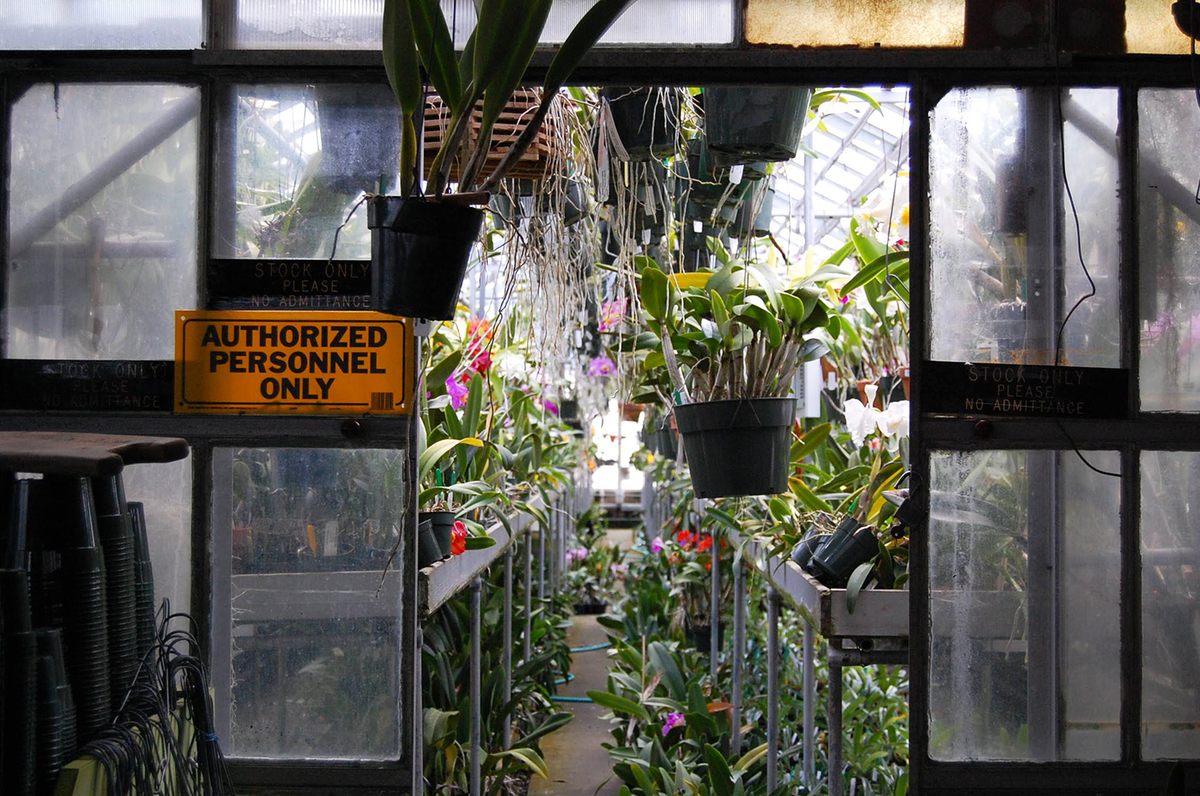
There is another way to cultivate orchids besides starting from a seed. In the very back of Waldor Orchids, past the crowd of identical white phals forming lofted clouds, there’s a greenhouse Off calls the “stockhouse.”
“We let people go in there and look around but not touch,” he says. “The stuff in there is just not for sale.” These are high-quality plants, often used as breeding stock, and most people don’t understand their value. But if a serious collector Off trusts, someone who knows orchids, sees a plant he or she has to possess, then eventually Waldor might relent and sell that dedicated person a cutting, called a “division.” Depending on the plant, a single division might cost hundreds of dollars.
Grown from an offshoot like this, each new plant is a clone of the parent. For breeders who’ve spent years developing unique and (to their minds) perfect flowers, that’s an advantage. In seeds, orchids’ genetics mix every which way, so two orchids from the same parent plants might have flowers of different sizes or beauty. Knudson’s germination breakthrough helped increase the supply of orchids, but didn’t necessarily make getting the plants that orchid lovers want much easier. Divisions helped, but the most desirable orchids were still elusive, because each plant can only be divided into a handful of new ones. Multiplying orchids in this way, wrote Donald Wimber, a cell biologist and another orchid innovator, in 1963, could be “at times exasperatingly slow and occasionally an almost futile effort.”
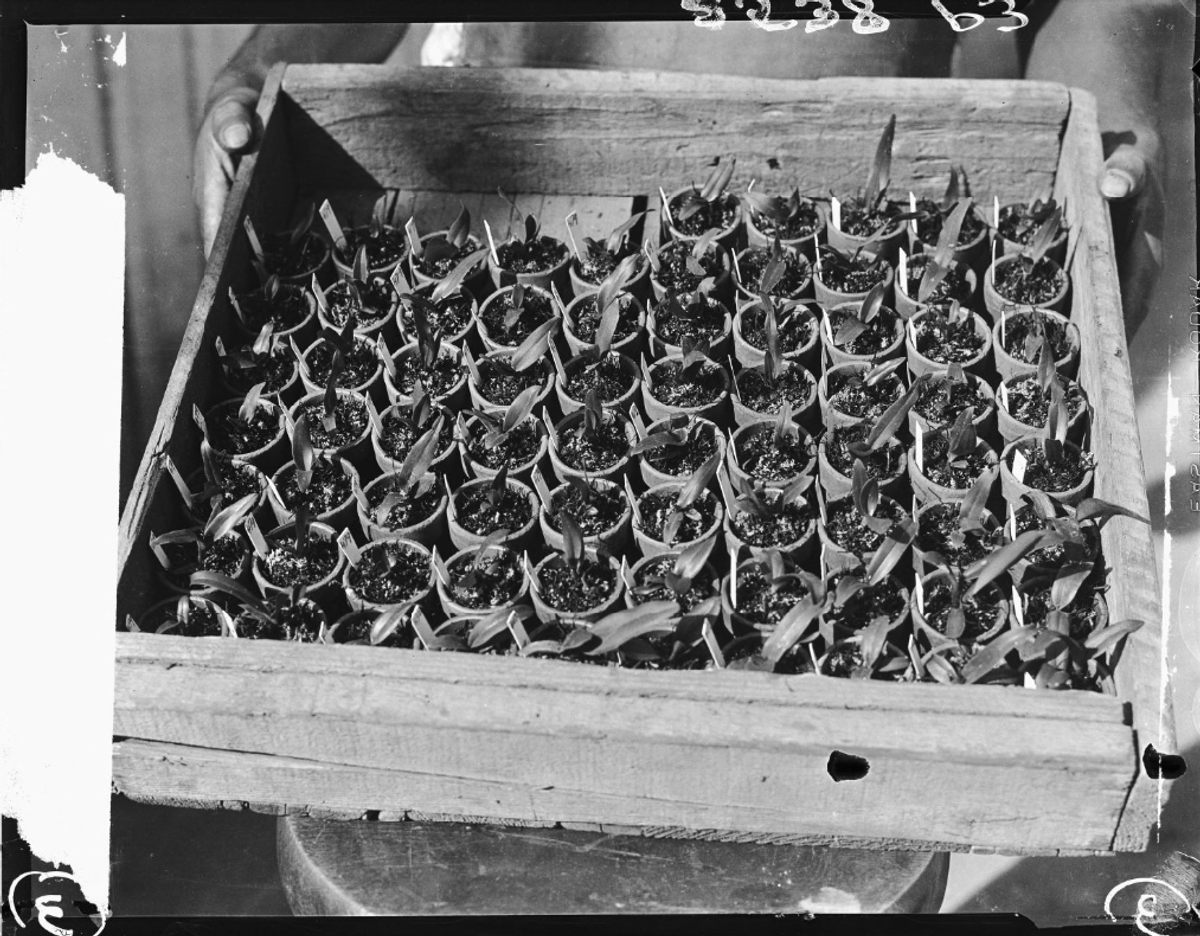
Wimber had a different idea about how to reproduce orchids. Instead of working with seeds, he began with small shoots, and devised a way to turn them into lumpy, vegetal balls that look like the eggs of some amphibious alien species and hold in their cells the promise of countless orchid clones.
When he started tinkering with orchids, in the 1950s, Wimber was a young scientist with short hair and heavy-framed glasses, studying cytogenetics, the relationship between chromosomes and cell behavior. As he finished his graduate work in Claremont, California, he was doing research on the side for Dos Pueblos Orchid Company, part of a vast ranch north of Santa Barbara, stretching three miles along the coast. Before the company bred a new hybrid, he inspected the cells of the parents and counted sets of chromosomes to try to predict the characteristics of their offspring. He oversaw a phalanx of flasks with seeds sown inside, using the techniques Knudson had pioneered.

In the summer of 1955, Wimber began experimenting. He selected shoots of new growth, less than two inches long, from a mature Cymbidium lowianum, an orchid with yellow-green petals and a white labellum (the part of the orchid that attracts pollinators) edged with crimson, as if it had been dipped into red ink. He stripped the shoots of their embryonic leaves and placed the shoots on a growth medium. Over time, instead of developing as a normal plant, they bubbled with lumps of undifferentiated orchid tissue. Cut into pieces, those lumps could—ever so slowly—be grown into tiny plants. By December, they were just an eighth of an inch tall. By 1957, they had reached just over four inches.
“I knew I had something,” Wimber told Arditti years later. Cloning was less clunky and limited than growing divisions, but it was still so slow, too slow for the commercial growers who employed him. Like Knudson, he also needed to prove that his lab-grown plants would flower, and with the same ideal flowers as the original.
Wimber left California for the Brookhaven National Laboratory in New York, which specialized in atomic research and had a “gamma garden,” in which plants are grown around a radioactive source in order to induce mutations, with the goal of discovering desirable traits. There was plenty of work there for a cytogeneticist, but Wimber kept tinkering with masses of orchid cells, too. By 1963, he had refined his technique.
Left untouched, the small balls that Wimber grew from orchid shoots would start developing into plants. But if he shook them around in the flasks in which they grew, they would develop into ever larger pluripotent balls. (Plants use gravity to determine where to send roots and stems, so agitating the balls confused them.) After about two months, Wimber chopped each ball into 20 or more pieces, dropped them in fresh solution, and shook them again. Repeating this process, he had created a factory of orchid clones—several hundred copies of a single original shoot. The small plants still had to grow up, but the technique, Wimber wrote, could mean that “desirable clones could be multiplied ad infinitum within a short time.” It transformed commercial orchid production. Around that same time, a French botanist used a similar technique to copy a famous hybrid, with petals flushed with pink, a labellum spotted with rich maroon, and a tiny, bright yellow tongue, thereby ridding it of a disease, a type of mosaic virus, that ruined its flowers. “In a few years,” The New York Times reported in 1964, “there may be no such thing as a rare orchid.”

The crimp-edged petals of a cattleya give it dimension. They smell nice. And a single cattleya orchid makes an excellent corsage. When Dave Off’s grandfather George started growing orchids, cattleyas were for special occasions. On Easter or Mother’s Day, demand spiked. George had started growing flowers in the 1920s and by the mid-1950s was selling tens of thousands of cattleya flowers a week during peak times.
Cultivating orchids requires both significant investment and vigilance. Cattleyas need six to eight hours of sun, year-round, so in temperate climates they’re often grown in greenhouses. At Waldor the boiler is hooked up so that Dave Off or his uncle can check the temperature at any hour. “If there’s a problem, you’re here,” says Off. “If it’s really cold outside and we lose our boilers, we have about two to three hours before the place will freeze.” Heat is one of their highest costs. Off thinks about his business in terms of cost per square foot of greenhouse. In general, plants need to earn back the cost of keeping them alive. In a couple of the Waldor greenhouses, there are rows and rows of tiny, two-inch plants, the products of a hybridization experiment. Soon Waldor will start selling those off, because it’s too expensive to keep them all as they grow larger and take up more room. From seed, cattleyas can take six to eight years to flower for the first time.
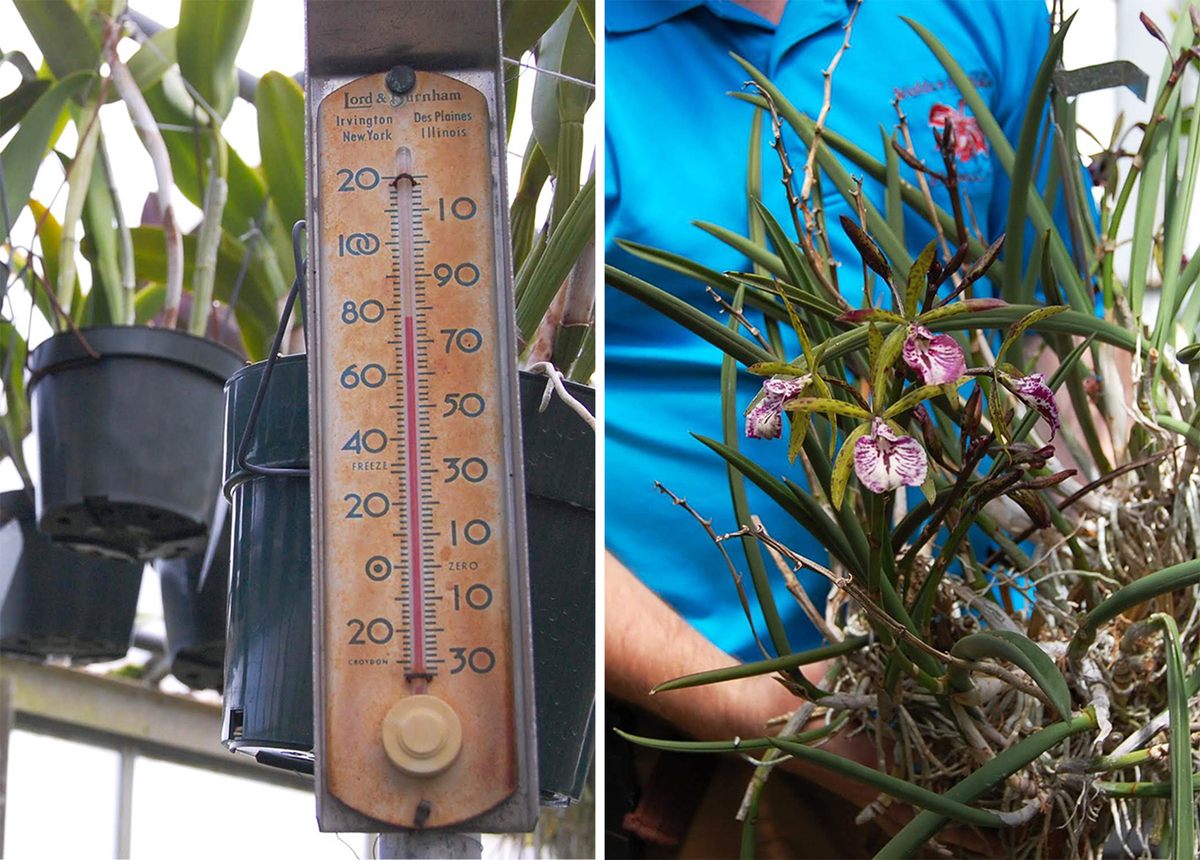
Most people don’t want to invest their time or shelf space in plants that look nice only a few weeks each year. Without flowers, the broad, flapping leaves and tendril-like roots of orchids can be considered ugly. Traditional growers such as Off’s grandfather made their money selling orchid blooms as cut flowers. But in the 1970s, not long after orchid cloning sped up, flower fashion changed. Wider windows flooded indoor rooms with sunlight, and potted plants colonized many homes. Plants flown in from tropical forests became decorative ornaments, and soon those potted plants became every bit as disposable and replaceable as cut flowers. Stores such as K-Mart and Home Depot, which opened its first store in 1978, started selling plants. People liked the idea of caring for living things, but if a plant dried up or simply didn’t fit the look of a room, it was cheap enough to toss.
“You could purchase plants like you could purchase a lamp,” says Robert Griesbach, a deputy assistant administrator at the U.S. Department of Agriculture (USDA). “You could buy a plant when you got your groceries, and the next week throw it away.”
In the early 1980s, Griesbach was hired as a research geneticist in a USDA lab that wanted to create an ideal potted houseplant for the general consumer. The perfect plant would have attractive, variegated leaves, an alluring smell, the ability to rebloom on a windowsill with east or west exposure, and amazing, colorful, long-lasting flowers. Griesbach and his colleagues looked at begonias. They looked at African violets. Lilies. Impatiens. None of them were right. But moth orchids—phalaenopsis—had promise.
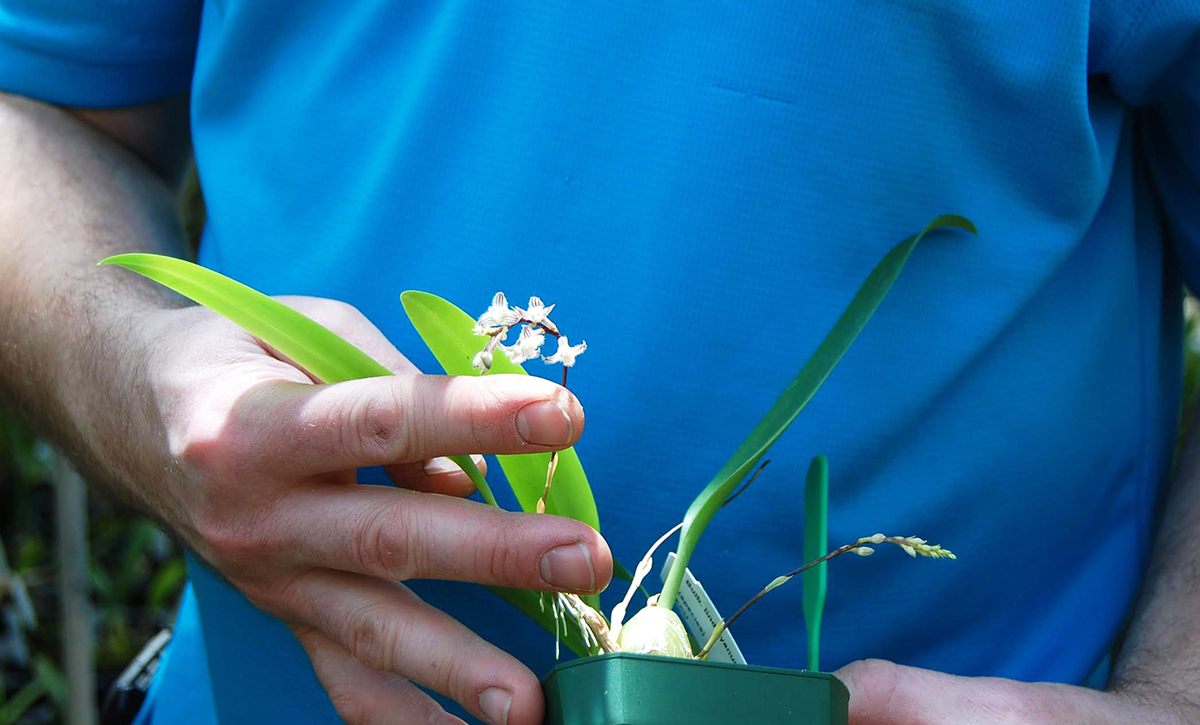
Phalaenopsis did not yet have much cachet. Their broad faces are tricky to fit into bouquets. They don’t make dramatic corsages. They don’t smell like much (which was a drawback for the USDA effort). They have good qualities, though. They flower big and long. They don’t require much water or light. Unlike cattleyas, they bloom within 18 months of being grown from seed. And they grow in conditions that people also enjoy—not too hot, not too cold. They are happy in the human home.
Griesbach started work on a commercial variety by breeding wild species to create a plant of the right size, with the right type of leaves, with larger, more plentiful flowers. When his lab released a couple of these creations, commercial growers picked them up, and started breeding those and others to create new varieties of their own. Phals were still expensive, at $60 or $70 a plant, but florists started to stock them.
American scientists were not the only horticulturists who saw promise in phals. In the 1970s Dutch growers started mass-producing phalaenopsis plants using the cloning technique Wimber had described. In the Netherlands, phals were sold as cut flowers, but the growers raised plants for the American market, too. They started up the little plants and then shipped them across the Atlantic. All American companies had to do was bring them to maturity. By the late 1980s, the price of phals started to drop.
Then Taiwan got involved, with a different cloning technique that created even more plants in a shorter period of time, another boon to the potted orchid market. “If you’re interested in cut flowers, you don’t need half a million plants,” says Griesbach. “If you’re selling potted plants, you need eight or nine million.” Taiwanese growers also started a massive breeding program, growing thousands of seedlings and picking the best ones to cater to the different tastes of the Japanese market, the Chinese market, the American market. “It is unbelievably cheap,” says Griesbach. “They outcompete everyone.” By the 1990s, it finally became possible to buy orchids—really, mostly phals—in many colors and patterns, for less than ever before.
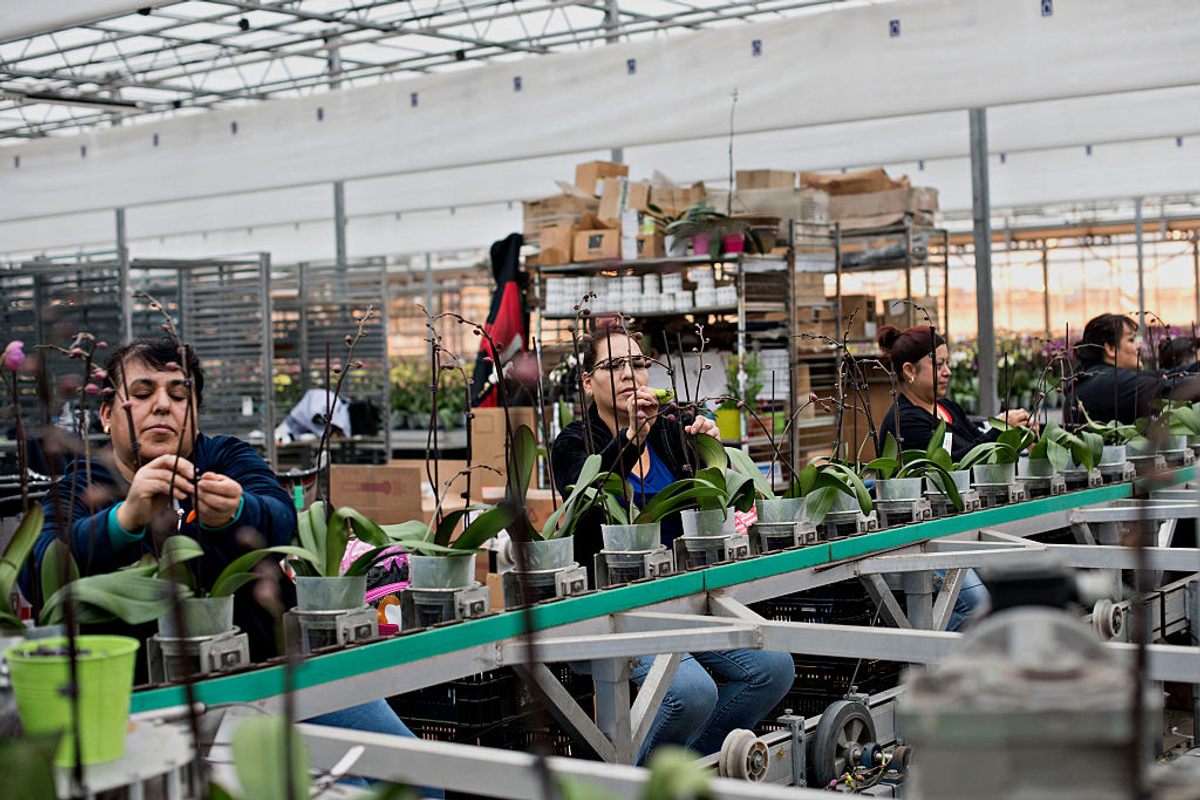
At one time, Waldor imported young, unbloomed phals from overseas and raised them in the greenhouses. Now the plants are so cheap, even fully grown, that it’s not worth dedicating the time and greenhouse space to cultivating them. Phals fill Waldor’s back greenhouse, but they leave almost as soon as they arrive. “If you come back here in a month or two, it’ll be completely different plants,” say Off. Once, the arrival of a new variety, with petals of a different color or pattern, would have been an occasion, but now it’s common for Waldor to get in new, unique, and beautiful orchid variants every month.
Once exotic, rare, and delicate, these orchids have been transformed into a commodity—inexpensive, widely available, and completely familiar. Of all the many orchids in the world, though, we’ve only manage to tame and package a few.
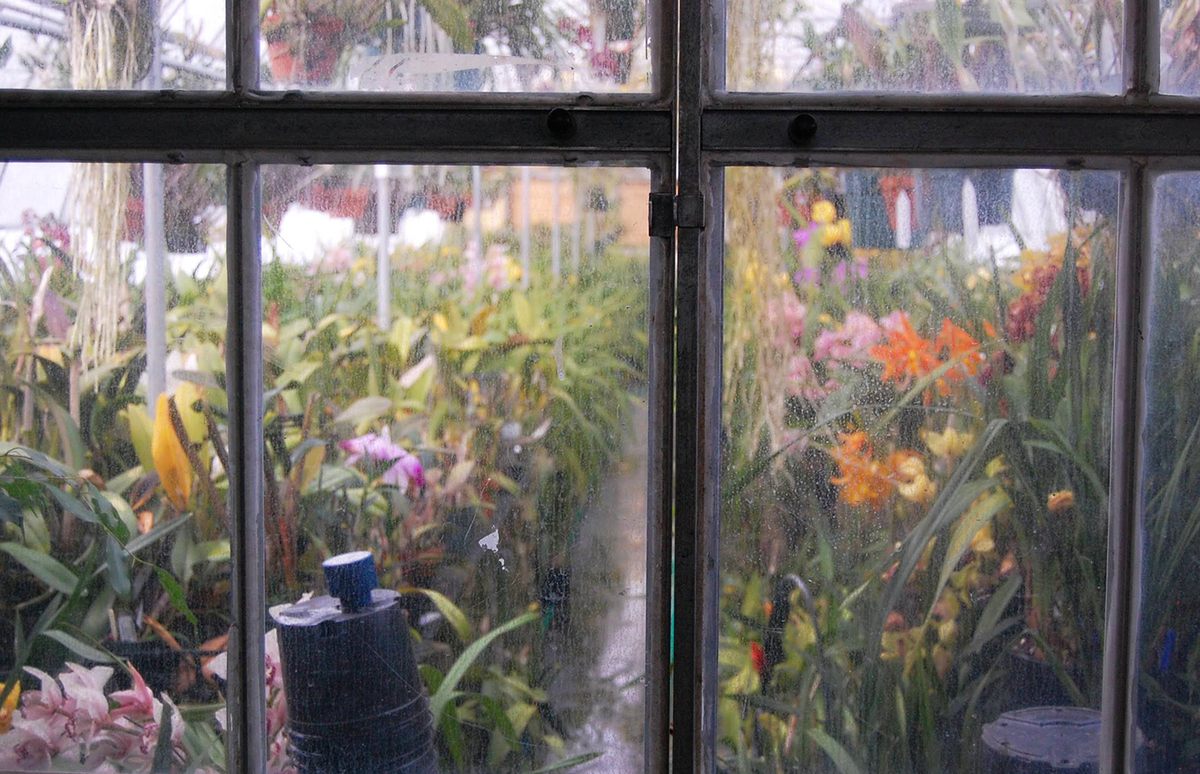
Off grew into his profession. He is 39 years old, and he grew up tending the orchids at Waldor, but he was probably 25 before he started to like it. Now he’s an obsessed plant collector, the sort who gets excited about a tiny, fuzzy flower that most people couldn’t care less about, just because he’s never seen it before. His personal orchid collection now has thousands of plants, most of which he keeps at the Waldor greenhouses, but only one phalaenopsis. “I have one that’s a fragrant, miniature thing,” he says. “I think that one plant is unique.”
Today, there are two types of orchid people—the same serious collectors who will spend real money on the plants they simply must possess, and orchid lovers who are satisfied by the now-simple pleasures of one phal after another. But buying a cheap orchid at a grocery store “is almost like getting a print versus an original painting,” says Off. “For me, I’d always want an original versus a copy.”
Even though phals are a big part of their business, Waldor still specializes in cattleyas, out of love for the flamboyant plants. Off knows that the path from dabbler to collector can be very short, anyway. Phals are often just a gateway orchid. People come into the shop all the time and say that they’re tired of them. What else can they grow?
“We always joke that every orchid person, if they grow orchids long enough, will grow cattleyas eventually,” says Off. “Because they’re the best orchid.”
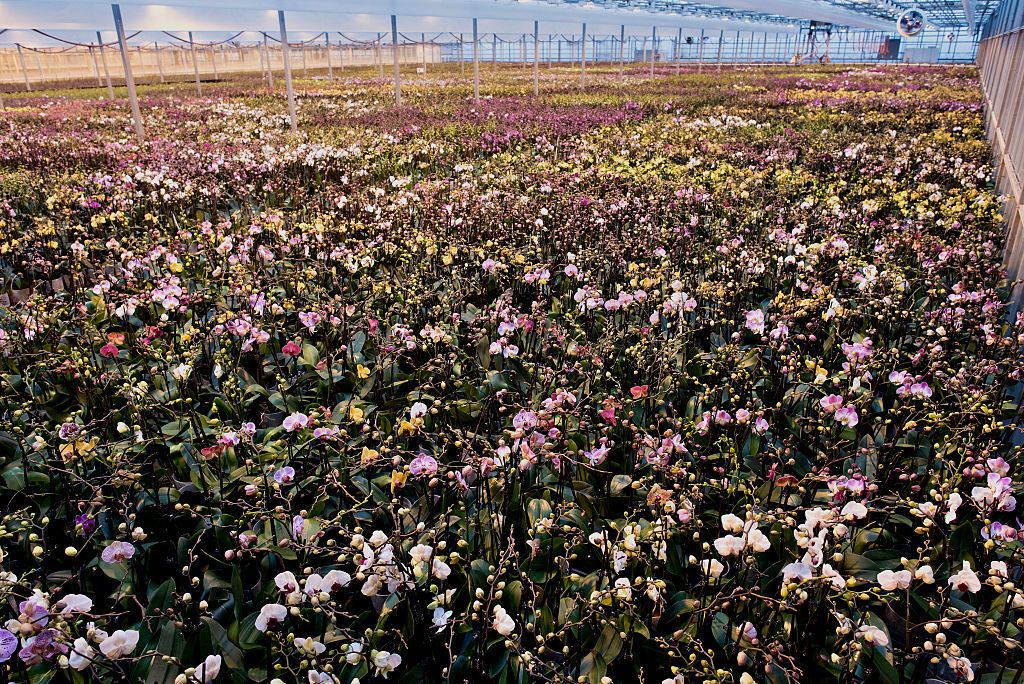





















Follow us on Twitter to get the latest on the world's hidden wonders.
Like us on Facebook to get the latest on the world's hidden wonders.
Follow us on Twitter Like us on Facebook